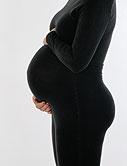healthnewslink
Kids Newsletter
October 8, 2012 |
| In this Issue |
|
|
|
|
Halloween Means Gobbling Candy
Expert offers tips to minimize sweets consumption among trick-or-treaters
 SATURDAY, Oct. 6 (HealthDay News) -- The really scary thing about Halloween can be the amount of candy that children get and eat.
To ensure a safe and healthy Halloween for kids, here are some tips for parents from Dr. William Gillespie, a pediatrician and chief medical officer at EmblemHealth:
- Give children a healthy snack before they go trick-or-treating so that they'll be less tempted to eat their sweets as they go door-to-door. Make sure your children understand that they can't eat any of their candy until you check to make sure it is safe. Get rid of homemade treats made by strangers.
- Allow your children to pick out a few of their favorite treats to have right after trick-or-treating. Keep the rest of their candy out of sight and allow them only one to two pieces when they ask for it.
- Consider trading a toy or extra allowance for your children's candy. If they are young enough, say the "Candy Fairy" will substitute a toy for the candy if they leave it out for her.
- Be a role model by consuming Halloween treats in moderation yourself. Also, it's a good idea to buy candy at the last minute and get rid of leftovers to avoid temptation.
- Let caregivers such as grandparents and babysitters know the rules on candy, which will prevent children from getting mixed messages.
- Think about giving out non-food treats such as stickers, toys, temporary tattoos, bubbles, small games or colored pencils. If you prefer to give out candy, choose bite-sized ones and hand out dark chocolate (it has antioxidants) or hard candy (it takes longer to eat).
More information
The U.S. Centers for Disease Control and Prevention offers more Halloween health and safety tips.

|
Prenatal Test Presents Dilemmas to Expectant Mothers
Knowledge isn't always power, some women say, study finds
 FRIDAY, Sept. 28 (HealthDay News) -- A sophisticated genetic test sometimes used during pregnancy can't always predict if chromosomal abnormalities will cause problems in children, leading some mothers to label the information "toxic knowledge" they wish they hadn't received, a small new study shows.
Researchers from three universities found that expectant mothers receiving bad news about a genetic test called a DNA microarray -- more often used after birth to identify chromosomal problems in children with unexplained delays or defects -- reported mostly negative responses, ranging from feeling blindsided to needing support to digest the information and make critical decisions about their pregnancies.
The women's reactions challenge the notion that knowledge is power, especially when that knowledge pertains to ambiguous information about an unborn baby's health, said study author Barbara Bernhardt, a genetic counselor and clinical professor of medicine at the Hospital of the University of Pennsylvania.
"I think we need to have better information readily available to patients and providers . . . to make the decisions they need to make in a timely manner," Bernhardt said. "We also need additional education of obstetricians and midwives to feel more comfortable talking to patients about it and counseling them about the results."
The study was published online recently in the journal Genetics in Medicine.
Standard DNA testing offered to pregnant women uses tests such as amniocentesis and chorionic villus sampling, which involve "karyotyping" to identify common abnormalities such as Down syndrome. But DNA microarrays can detect smaller-scale chromosomal changes that can signal future problems such as autism or congenital disorders, although the test can't necessarily predict how severe the problem will be or even if a gene variant will produce any discernible conditions in the child.
Some of the 54 study participants, 23 of whom were interviewed at least six months after childbirth or pregnancy termination, had learned from ultrasound or other tests that their fetus had abnormalities. But for those whose prior tests had come back "normal," learning their baby had genetic variants of unknown significance sent some of them into a tailspin.
Bernhardt's team identified five key responses that described the women's experiences, including considering the microarray results toxic knowledge they wish they hadn't learned. Many of the women accepted the testing -- which costs between $1,500 and $3,000 -- because it was offered at no charge to them, which they felt was "an offer too good to pass up."
Unlike children who are tested using DNA microarrays to help diagnose existing problems, children tested prenatally may never develop health or developmental issues arising from their genetic variants. "We discovered in the course of the study that some of the parents have the same [chromosomal] deletion or duplication as their fetus" but never suffered any ill effects, said Bernhardt, also co-director of the Penn Center for the Integration of Genetic Healthcare Technologies.
However, "the horse is out of the barn," she added. "This test is there, it's available, which is why we have to provide good information and careful counseling."
Sandra Darilek, a genetic counselor and clinical instructor at Baylor College of Medicine in Houston, said the vast majority of results presented by microarray testing are straightforward, but every genetic condition presents differently, from mild to severe.
"In a lot of cases, it's an incredibly useful test because if they get a normal result, it can be very reassuring for a patient," Darilek said. "But it also depends on the point of view the patient is coming from. Some want all the information possible and are willing to take uncertainty, and some want straightforward information."
Because technology is continually advancing, ambiguity will always be part of newer medical tests, Darilek noted.
"I don't know that uncertainty will ever be completely absent from prenatal testing at all until we have a handle on our complete genome," she added. "But with the platform of testing we currently have, if it would stay static, within a few years we'll have an even better grasp on some of these [genetic] variants that are new to us now. But it's going to be an ever-evolving situation."
More information
The American Academy of Family Physicians has more about prenatal diagnostic techniques  . .

|
Drinking, Driving Drops by Half Among Teens: CDC
But almost 1 million a month still do, agency says
 TUESDAY, Oct. 2 (HealthDay News) -- The number of U.S. teenagers who drink and drive dropped by more than half from 1991 to 2011, federal health officials said Tuesday.
Nine out of 10 high school students age 16 and over said they did not drink and drive in 2011, according to the U.S. Centers for Disease Control and Prevention (CDC). This represents a decline of 54 percent over two decades.
"There is good news in some of the data here," CDC director Dr. Thomas Frieden said during a noon press conference Tuesday.
Still, one in 10 -- or nearly one million students -- reported driving after consuming alcohol each month.
"Drinking and driving is risky for any driver, but especially for young teens," Frieden said. "Young drivers are 17 times more likely to die in a crash when they have a blood alcohol concentration of 0.08 than when they have not been drinking."
Car crashes remain the leading cause of death for teens, Frieden said. "There are more than 2,000 teens aged 16 to 19 killed on the road each year, and many of those deaths are alcohol-related," he said. One in five teen drivers involved in a fatal crash in 2010 had alcohol in their system, he added.
For the report, released Oct. 2, the CDC used data from the 1991-2011 Youth Risk Behavior Surveys, which asked U.S. teens if they had driven after drinking once or more in the past month.
Highlights of the report include:
- High school students drove after drinking about 2.4 million times a month in 2011; some did so more than once a month.
- Boys 18 and older were most likely to drive after drinking (18 percent), and 16-year-old girls were least likely (6 percent).
- Most teens (85 percent) who drove after drinking also reported binge drinking in the past month. Binge drinking was defined as downing five or more drinks in a short time frame.
- The six states where teenage drinking and driving rates were higher than average were Iowa, Louisiana, Montana, North Dakota, Texas and Wyoming, while drivers in the following nine states were least likely to drink and get behind the wheel: Alaska, Indiana, Kentucky, Michigan, New York, North Carolina, Rhode Island, Utah and Virginia.
Proven ways to reduce drinking and driving among teens include restricting the legal drinking age to 21 and implementing graduated driver licensing systems that restrict driving at night or with teen passengers, the CDC says.
"Every state has a graduated license system, but rules vary from state to state," Frieden said. These laws and other efforts have reduced teen driving deaths by nearly 40 percent in less than four years, he said.
Parents also play a role in keeping their teens safe on the road. They can be models of safe driving and can use parent-teen driving agreements that limit driving.
These agreements can include a ban on drinking and driving, insistence on obeying driving laws, including wearing seatbelts, and limiting night driving and the number of teen passengers, Frieden said. Agreements can also include not texting or talking on a cellphone, he added.
The report was published in the October issue of the CDC's Vital Signs Report: Teen Drinking and Driving: A Dangerous Mix.
More information
For more information on teen driving, visit the U.S. Centers for Disease Control and Prevention.

|
Obesity Now Puts Kids' Hearts at Risk Later
Large review found increased blood pressure, cholesterol levels and other forerunners of disease

TUESDAY, Sept. 25 (HealthDay News) -- Obese children appear to develop risks for heart disease usually not seen until adulthood -- putting their health in jeopardy as they age, British researchers report.
These risk factors -- including high blood pressure, high cholesterol, high blood sugar levels and thickening of the heart muscle -- can boost heart disease risk by up to 40 percent, the study authors noted.
"We really need to take action on childhood obesity from as young an age as possible," said lead researcher Claire Friedemann, of the department of primary care health sciences at Oxford University. "We have shown that obesity is not just about appearance but could have a long-term effect on the health of the child. By not fully tackling the problem, we could lose the progress that has been made in treating heart disease in recent years."
Dr. Gregg Fonarow, professor of cardiology at the University of California, Los Angeles, and spokesman for the American Heart Association, added that obesity is associated with many cardiovascular risk factors and, among adults, contributes to diabetes, premature cardiovascular disease and death.
"These findings suggest that being obese in childhood significantly worsens cardiovascular risk factors and the adverse health consequences may be even greater than previously expected," he said. "Substantial global efforts are needed to address childhood obesity."
The report was published in the Sept. 25 issue of the journal BMJ.
For the study, Friedemann's team analyzed 63 studies that measured weight and risk for cardiovascular disease in children and teens between 5 and 15 years old. In all, more than 49,000 children were included in these studies, which took place in "highly developed countries" and were published between 2000 and 2011.
This type of study, known as a meta-analysis, is used to find common threads running through several studies in hopes of being able to make a stronger argument for an overall finding. Problems with this type of analysis arise from the weakness of any one of the studies included and the difficulty of combining disparate data.
In their analysis, the researchers found that, compared to normal-weight children, obese children had significantly higher blood pressure, cholesterol and blood sugar levels as well as thicker heart muscles.
These risk factors can increase the risk of heart disease and stroke by 30 percent to 40 percent when these children reach adulthood, the researchers warned.
Overweight children also had higher blood pressure, but to a lesser extent than obese children.
"Although the size of the effect that obesity has on the health of children's hearts is worrying, the good news is that they can all be improved with a healthy diet and exercise," Friedemann said. "These habits are much easier to begin in childhood and carry through to adulthood."
Dr. David Katz, director of the Yale University Prevention Research Center in New Haven, Conn., said "there was a time such news would have been shocking, but this study tells us what we already knew: widespread obesity imperils our children's futures. How much more data do we really need before we commit to doing everything in our power to fix that?"
Dr. Nancy Dobrolet, a pediatric cardiologist at Miami Children's Hospital who sees obese children daily in her practice, said that "these findings are real and the health effects on children are real."
"I see this in my clinic every day," she said. "Every day, patients are being referred for hypertension and high cholesterol and the overwhelming majority of those patients are obese."
Most of these children don't exercise at all, said Dobrolet, who doesn't put her patients on blood pressure or cholesterol-lowering drugs.
"The first treatment is to change your diet and exercise," she said.
More information
To find out more about childhood obesity, visit the U.S. Centers for Disease Control and Prevention.

|
| Copyright © 2012 ScoutNews, LLC. All rights reserved. |
|